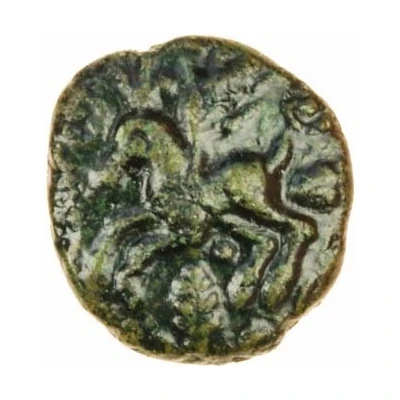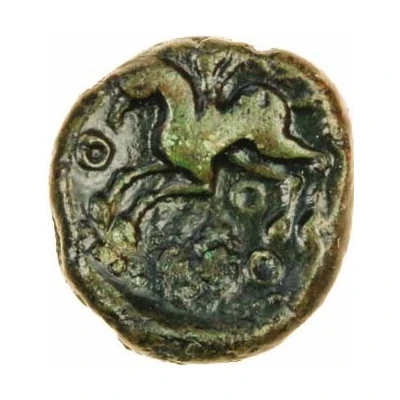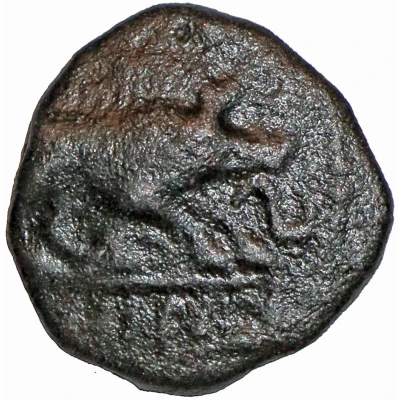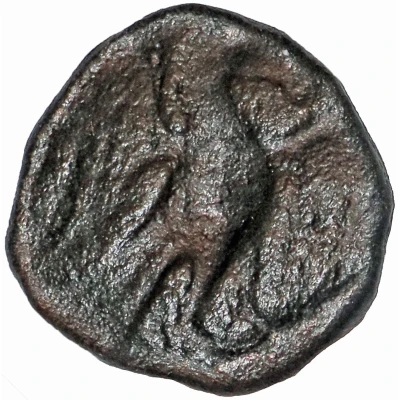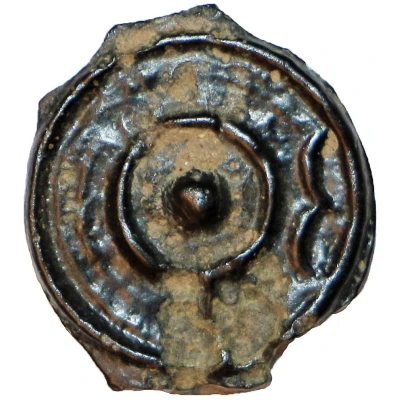
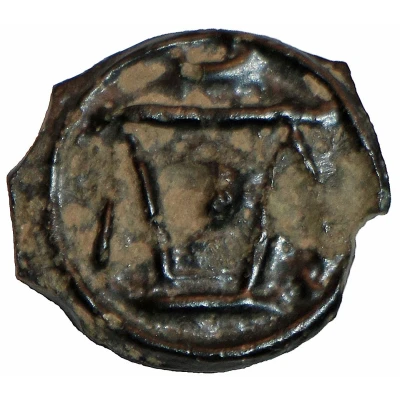

© John Conduitt (CC BY-SA)
Bronze Unit "Cantian E" 50 BC - 35 BC
| Bronze | 1.3 g | 13 mm |
| Issuer | Cantii tribe (Celtic Britain) |
|---|---|
| Type | Standard circulation coin |
| Years | 50 BC - 35 BC |
| Currency | Stater |
| Composition | Bronze |
| Weight | 1.3 g |
| Diameter | 13 mm |
| Shape | Round (irregular) |
| Technique | Cast |
| Orientation | Variable alignment ↺ |
| Demonetized | Yes |
| Updated | 2024-10-09 |
| Numista | N#120155 |
|---|---|
| Rarity index | 95% |
Reverse
Celticised figure of bull made up of straight lines, large pellet in centre
Comment
Early Uninscribed Coinage (c.120-c.50 BC)Smaller than Cantian D types with a pronounced pellet in centre (often described as a nipple). It is not usually possible to determine which way the bull is facing. Van Arsdell lists several variations (Rudd and Spink do not):
- Early dump type with an outline head of Apollo (V 135-136)
- Middle dump type where Apollo's head outline is barely discernable (V 137-138)
- Late dump type where head of Apollo is only a circle with a line for the nose (V 139)
Interesting fact
One interesting fact about the Cantian E coin is that it features a unique design that reflects the cultural and religious beliefs of the Cantii tribe. The obverse side of the coin depicts a stylized horse, which was a symbol of strength and power in Celtic culture, while the reverse side features a triple-tailed horse and a warrior, representing the tribe's military prowess and their connection to the land and its natural resources. This coin is a rare and valuable artifact that provides a glimpse into the lives and beliefs of ancient Celtic tribes in Britain.
